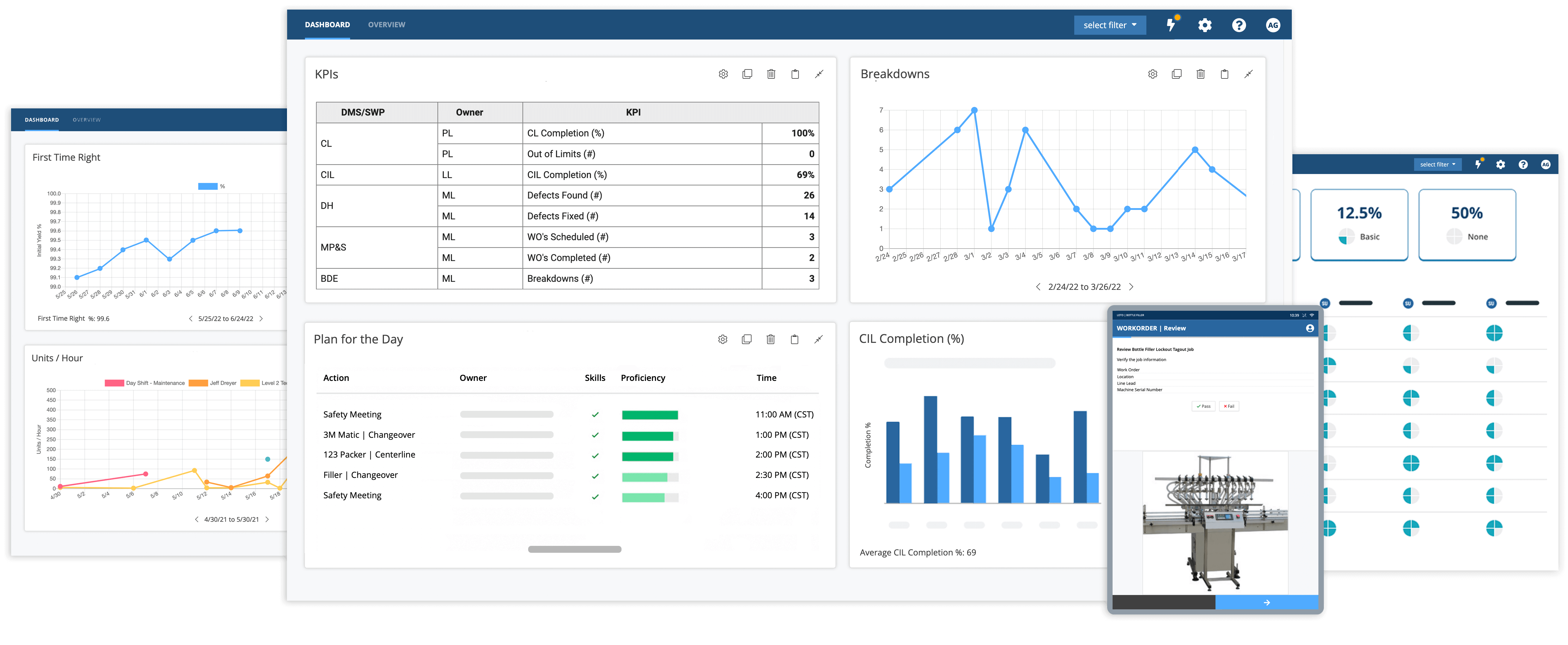Connected frontline operations platforms are helping manufacturers reduce downtime and provide a foundation for a holistic preventive maintenance strategy.
First time quality plans, or first time right plans, are a manufacturing approach that ensures all processes on the production floor are performed properly the first time, every time. A FTQ plan is a document that outlines which standards, practices, and resources are needed to execute those procedures to create high-quality products.
A quality plan is a must to guarantee zero-defect goods and prevent the need for any rework or scrapping of parts. If a manufacturer’s goods do not meet internal, industry, or consumer standards, then it’s more than likely that they won’t sell.
Every product development project should have a quality plan in place. Read on to learn how to create a first time quality plan document:
What to include in a first time quality plan
A FTQ plan, when executed correctly, can help you reach 100% FTQ, which means zero defective products. As a result, it boosts consumer trust in your product and your company’s credibility. It’s a good way to cover all bases to ensure nothing is left out, from product goals and objectives to testing requirements and distribution.
A FTQ plan may contain the following:
- Goals and objectives, including item specifications, cycle time, materials, cost, etc.
- A list of procedures
- Worker expectations and responsibilities
- What industry standards should be applied
- A method for measuring quality
- Testing requirements
- Updates to procedures
3 steps for creating a FTQ plan
Developing a quality proposal is a great starting point for making sure that products are made right the first time around.
The steps below explain how to successfully create first time quality plans and strategies that give your manufacturing operations a competitive edge.
Step 1: Conduct an initial audit
Creating a FTQ document begins with an initial audit of the suppliers a manufacturer will use. An audit is the perfect way to gauge whether a supplier matches your product expectations and meets your quality standards.
An audit may check:
- Materials
- Equipment/machinery
- Procedures
- How well staff is following processes
Step 2: Determine if suppliers meet product specifications
Next, it’s vital to check whether a contractor can produce items that meet your standards and specifications. It’s also important to establish a partnership and a solid communication process with your supplier so that nothing falls through the cracks.
Step 3: Implement quality inspections
Lastly, a well-formulated plan includes quality inspections of each production run and product before distribution. This is usually completed by quality inspectors on the shop floor.
Inspection criteria typically includes:
- Order and shipment sizes
- Packaging and appearance
- Product performance
Once the inspection is done, a report should be created and submitted to the quality manager before any products are shipped. This report also serves to measure quality metrics and places for improvement.
First time quality with Augmentir
Augmentir is a connected worker solution that allows industrial companies to digitize and optimize all frontline processes that are part of their quality management strategy. Augmentir’s complete suite of connected worker functionality is built on top of Augmentir’s patented Smart AI foundation, which helps identify patterns and areas for continuous improvement.


